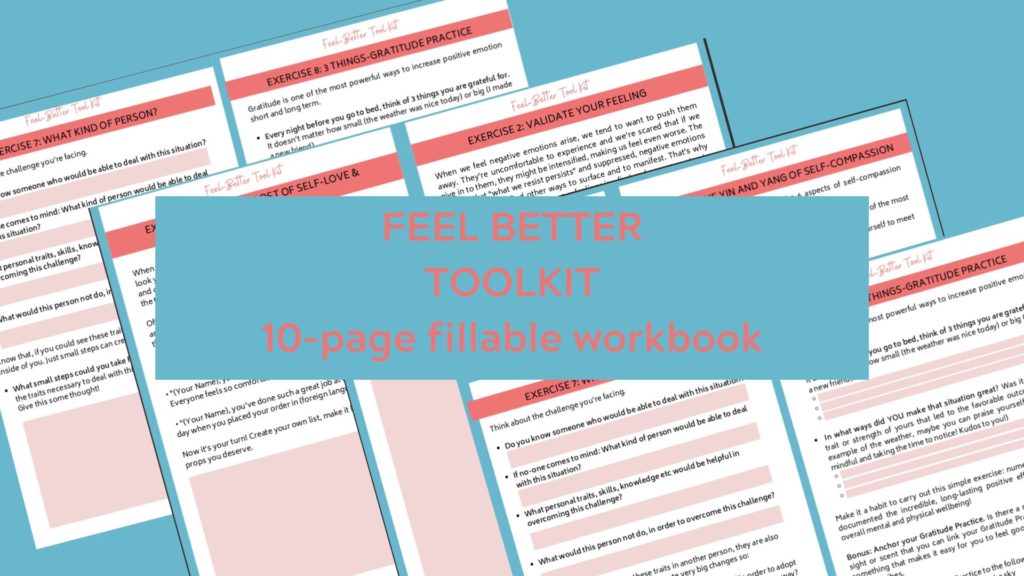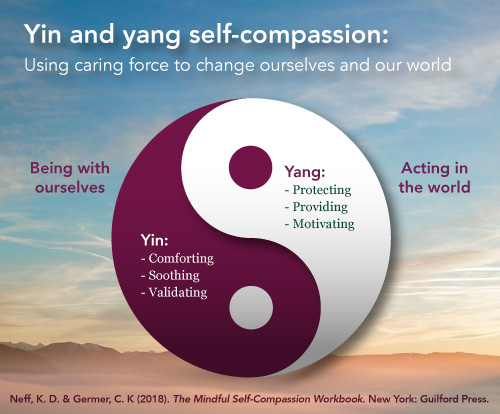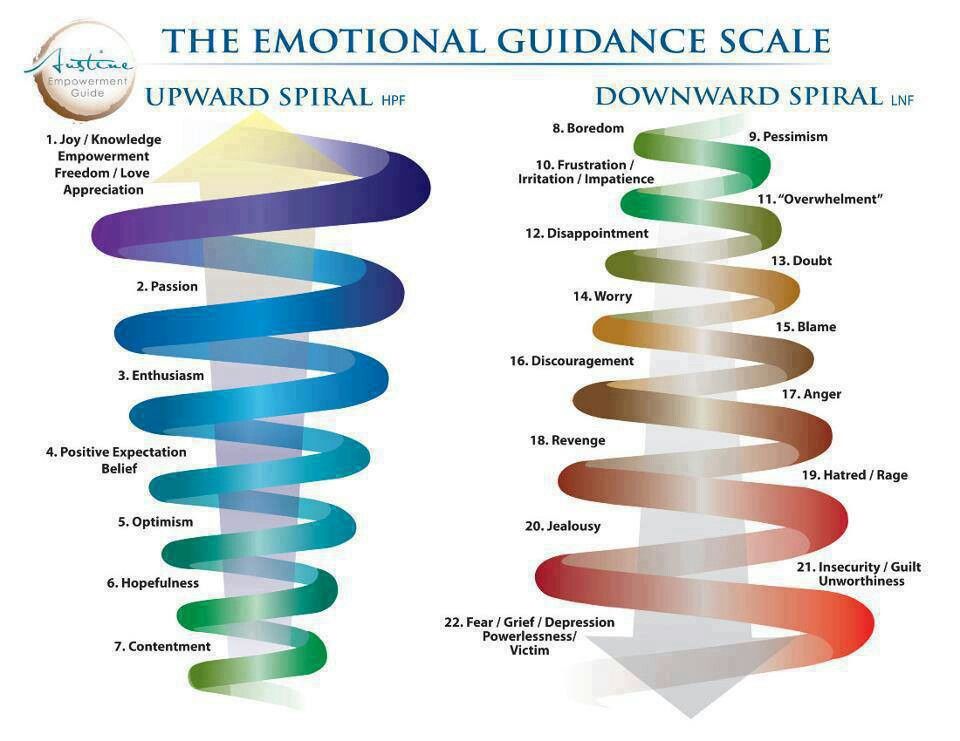The Feel Better Toolkit for Expat Women
Click here to: Claim Your Free Gift! The 10-page, fillable “FEEL BETTER TOOLKIT”

feel-better-toolkit for expat women
The other day a client asked me: “Do you never feel down?” We had just exchanged some personal experiences of our cross-border lives and she clearly felt seen and understood by me, leading her to wonder about how I dealt with difficult situations and people.
We all have our share of challenges, hardships and struggles. But throughout my (ongoing) journey of growth and evolving consciousness, I’ve acquired and internalized many tools and healthy habits that make it easier for me to deal with triggers. Of course I still get triggered! But nowadays I’m much more aware of what’s going on; if I fall into a hole of anger or sadness, it’s not as deep and dark as it would have been years ago and I’m able to come out of it faster.
But this blog post isn’t about me but about YOU and how YOU can feel better in times of challenges: you, too, can train yourself to acquire certain tools and habits that will help you shift a “negative state” towards a positive one, more and more frequently and rapidly. Oftentimes, all you need in order to notice relief is a little nudge, and to just pivot into the right direction.

I’ve compiled some of the things I’ve learnt and teach my clients in this article – and as a special gift for you I’ve created a free, fillable workbook (click here to download it) full of great exercises to overcome adversity and to become a more resilient and happier version of yourself.
Understanding H-A-P-P-Y
Happiness. We all want it and chase it, but that doesn’t always lead us to actually feel it. This is due to common misconceptions of what true happiness is. So to start off, I want to make sure we’re on the same page about it. I wouldn’t be surprised if, just by correcting your definition of happiness, you’ll already feel a weight lifting off your shoulders.
HAPPINESS ISN’T:
- Attained from the outside in (If I had _____, I’d be happy)
- A peak-state, like Euphoria, Ecstasy, Stimulation
- The mere absence of problems. In our world of polarity, happiness couldn’t exist without its antonyms. You can find happiness even in difficult times.
- Resisting and blocking out negative events or feelings
- Unavailable to you
HAPPINESS IS:
- Attained from the inside out (“Inner Happy Place“)
- Sometimes loud, other times quiet. A peaceful, blissful state of abundance
- Being fully present in the NOW (not thinking about tomorrow’s deadline and yesterday’s argument)
- Being WHOLE. Being able to accept and embrace the bright and the shadow sides that co-exist within you and in life.
- Something you can train yourself to feel more and more

Pain is Inevitable. Suffering is Optional.
We will all experience painful events in our lives. Moving abroad can be painful. A fight with your spouse. Harsh words of a dear friend. The loss of a loved one. The list is endless. Pain is a part of life.
But suffering is created after the painful event occurred, because:
>>> You tell yourself a story about the painful event and attach meaning to it or interpret it in absolute terms. (“He didn’t consider me in his decision so that must mean he doesn’t love me. Our relationship is doomed”.) Remember: meaning and interpretation is always subjective. We live in a world of multiple, personal realities.
>>> You resist what’s happened and want to push it away (“I can’t accept this! This is not allowed to happen!”)
>>> You compare yourself to others who are “better off”.
>>> You attach to the dis-empowering story you tell yourself about the painful event and make it a part of you (“I’m just not lucky in relationships”)
In the free workbook you’ll find exercises to transform your suffering.
Increasing Consciousness
The more self-aware and conscious you become of your states of mind, your thoughts, feelings and triggers, the more sense you can make of them and, as a result, the better you’ll be able to deal with them.
In my last post about Understanding and Managing our Emotions, I explain that our feelings are always preceded by a thought (sometimes an unconscious one, rooted in underlying scripts and beliefs). When you can trace your unpleasant feeling back, layer by layer by layer (there are usually numerous ones!) to the root thought, you can start the healing process.
The typical root causes of our unpleasant feelings are:
- the fear of failure
- the fear of not being good enough
- the fear of not being loved
Name it to tame it
Now that you understand where your negative feeling comes from, it’s important to give it a name (label). Bear in mind that each word is loaded with meaning that you’ve attached to it throughout your life. Therefore you can’t afford to choose these labels carelessly. E.g.: you might say you’re depressed but could another term describe your state more accurately? Such as disappointed, lonely, anxious, sad etc? Be very specific about what feelings you are experiencing. It’s only when we can properly name them that we can start taming them too.

Feel your feelings
So often, we think our feelings instead of feeling them. That way you get sucked in more and more into the disempowering, fear-based story you’re telling yourself. Have you ever had whole, lengthy internal monologues about a disturbing event? (“I can’t believe so and so said that! I should have told her right then _______ She must really think so little of me. Next time I see her I’m simply not going to _____ ………”) I know I have!
What helps me to get centered is checking in with my body and noticing these sensations on the physical, feeling level. (You’ll find the instructions for this exercise in the free workbook).
Take care of yourself
When you’re in a “negative” state of mind, it’s important to nurture yourself and to treat yourself with loving kindness and compassion, just like you would treat your best friend.
In her book “Mindful Self-Compassion”, Kristin Neff mentions 6 aspects that make up Self Compassion. Can you analyze which of these you’re needing right now and come up with ways to provide you with them? The exercise in the workbook will help you.

- Comforting: How can you make yourself feel better? What do you need right now and can you grant it to yourself?
- Soothing: How can you help yourself to calm down? Maybe a walk outside in nature? A bubble bath? What helps you to relax?
- Validating: Do you need to feel understood? Can you acknowledge and validate the way you feel?
- Protecting: Where do you need to set boundaries? Where can you draw a line to shield yourself from more pain?
- Providing: How can you meet your needs for yourself? Do you know what they are? Can you make your needs a priority?
- Motivating: Can you bring out your “inner coach” and cheer yourself on, in a loving way?
Increasing Positive Emotions
In their essence, all positive emotions stem from Love and all negative emotions are rooted in Fear. There is no shame in feeling angry or upset, even depressed for some time. Negative emotions can be a motivating force to make us change things in our lives for the better or provide us with valuable lessons on our journey.
The problem arises when we feel negative emotions too frequently and too intensively, maybe even out of proportion to an event that occurred. In that case we’ve likely developed a pattern. But this can be reversed, and the field of Positive Psychology has studied numerous ways to create new and healthier patterns.
Dr. Martin Seligman’s PERMA model is a great and reliable framework for the pursuit of happiness. The five ingredients needed to achieve it are:
P: Positive Emotions
E: Engage
R: Relationships
M: Meaning
A: Accomplishments
Dr. Barbara L. Fredrickson states that positive emotions not only increase our thought-action repertoire by broadening our mindset, but also make way to increasingly experience “neighbouring emotions” as well, like on the upward spiral in the picture below. (Negative emotions, in turn, narrow our view and – if not attended to – can set us up on a downward spiral).

My 3 favourite ways to increase positive emotions (and to consequently re-wire your brain to experience them more frequently) are:
- Gratitude Practices (see exercises in the workbook)
- Daily acts of kindness toward another: What small or big gestures can you make today and every day to make someone else feel good? This will inevitably make you feel good too.
- Loving-Kindness Meditation & Mindfulness: you can find guided meditations on Youtube and Spotify.
Surrendering
Are unable to stop worrying about the future? While I’m a total advocate of going for your dreams and working towards achieving your goals… there comes a moment in which we simply have to surrender.
Surrendering means letting go of the need for things to be a certain way. Releasing the stress and anxiety attached to achieving or receiving something. Trusting in God (or any higher power and purpose you believe in) that it will all be okay and things will fall into place. Maybe not exactly like you had hoped or expected, but the way they simply have to be.
Suffering is: not accepting what is. In this day and age we are so accustomed to take matters into our own hands and change or manipulate things for our own benefit. But some things cannot or should not be changed. They need to be the way the are supposed to be. We can’t control all of the events and outcomes in our lives; attempting to do so would amount to an unbearable level of stress.
Ask yourself:
- Is the problem I’m struggling with in my circle of influence? Am I actually able to change it? Is it really “my business”, someone else’s or even ‘force majeure’?
- Can you reframe your problem by focusing on the lessons learnt from it? Or as a way to figure out what you don’t want more of in your life?
It is through surrendering that we can really be free and happy. And that’s my wish for you!
Want more personalized support?
Then go ahead and book a complimentary clarity session with me here!
Sending you light, love and strength,
Camilla



Thank you ever so for you article post.
Thank you ever so for you article post.
Like!! I blog quite often and I genuinely thank you for your information. The article has truly peaked my interest.